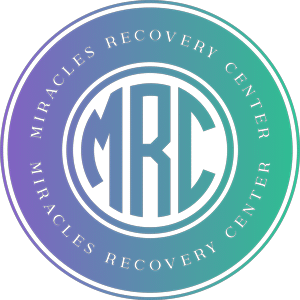Recovering from benzodiazepine use can be a challenging journey, but understanding the steps involved can make the process smoother and more manageable. In this article, we’ll explore seven essential steps in benzodiazepine recovery to help guide and support you through this important phase of your life.
Table of Contents
- 1 1. Understanding Dependence and Withdrawal
- 2 2. Seeking Professional Medical Guidance
- 3 3. Developing a Personalized Tapering Plan
- 4 4. Building a Strong Support System
- 5 5. Incorporating Healthy Lifestyle Changes
- 6 6. Exploring Therapy and Counseling Options
- 7 7. Embracing Mindfulness and Relaxation Techniques
1. Understanding Dependence and Withdrawal
Before embarking on the road to recovery, it’s crucial to understand the nature of benzodiazepine dependence and the withdrawal symptoms you may experience. Knowledge empowers you to better handle the challenges ahead.
Benzodiazepine dependence develops over prolonged use, subtly altering brain chemistry. This change leads to tolerance, meaning that over time, larger doses are required to achieve the same effect. It’s essential to recognize the signs of dependence, which can range from increased dosage to use despite adverse consequences. Withdrawal symptoms can be severe and include anxiety, insomnia, and even seizures in extreme cases.
Understanding withdrawal is equally critical, as it involves both physical and psychological symptoms. Symptoms can start hours after the last dose and might last several days or even weeks, depending on the duration and intensity of the dependence. Being informed about the withdrawal timeline helps in preparing mentally and physically for the road ahead.
2. Seeking Professional Medical Guidance
Consulting with healthcare professionals who specialize in addiction and withdrawal is a critical step. They can tailor a tapering plan and provide the medical support necessary for a safer and more comfortable recovery.
Professional guidance ensures that your journey through recovery is supported by medical expertise. Healthcare providers can offer evidence-based practices designed to manage withdrawal symptoms effectively. They may recommend inpatient programs or outpatient support, depending on the severity of your dependence.
3. Developing a Personalized Tapering Plan
Gradually reducing benzodiazepine dosage under medical supervision helps to minimize withdrawal symptoms. A personalized tapering plan ensures that your path forward is both safe and effective.
A tapering strategy is a cornerstone of benzodiazepine recovery. It involves slowly decreasing the medication dosage over time, allowing your body to adjust to lower levels of the drug. This approach minimizes withdrawal symptoms and reduces the risk of complications. Each plan is tailored to the individual’s needs, taking into account factors such as the type of benzodiazepine used, the duration of use, and any previous attempts at tapering.
4. Building a Strong Support System
A supportive network of friends, family, and support groups can greatly enhance your recovery experience. Sharing your journey with those who understand can offer emotional strength and encouragement.
Support systems play a vital role in the recovery process. They provide emotional support and can help hold you accountable. Look into joining a support group where individuals with similar experiences come together to share their stories and coping mechanisms. Your support network serves as a reminder that you are not alone on this journey.
5. Incorporating Healthy Lifestyle Changes
Adopting healthier habits, such as regular exercise, a balanced diet, and adequate sleep, can improve your physical and mental well-being, making the recovery process more manageable.
Exercise is particularly beneficial as it boosts mood-enhancing neurotransmitters in the brain and can significantly reduce anxiety and depression, common withdrawal symptoms. A balanced diet provides the necessary nutrients to help heal both body and mind. Coupling these with sufficient rest creates a holistic approach to well-being, fostering a supportive environment for recovery.
6. Exploring Therapy and Counseling Options
Professional therapy and counseling provide a safe space to address underlying issues and emotional challenges. Cognitive-behavioral therapy, in particular, can help modify negative thought patterns.
Therapy sessions offer more than just a listening ear. They can equip you with strategies to manage stress and anxiety effectively. Cognitive-behavioral therapy (CBT), for instance, is proven to change destructive behaviors by altering negative thought processes. Engaging in therapy helps in tackling triggers and establishing healthier coping mechanisms.
7. Embracing Mindfulness and Relaxation Techniques
Practices like mindfulness, yoga, and meditation can help manage stress and reduce anxiety during recovery. These techniques encourage a more centered and tranquil state of mind.
Mindfulness training teaches you to be present in the current moment, reducing the impact of stress triggers and promoting emotional well-being. Yoga and meditation assist in achieving a state of calm, helping to relieve accumulated tension. Engaging in regular meditative practices can elevate your recovery journey, providing peace and mental clarity needed for overcoming dependency challenges.











